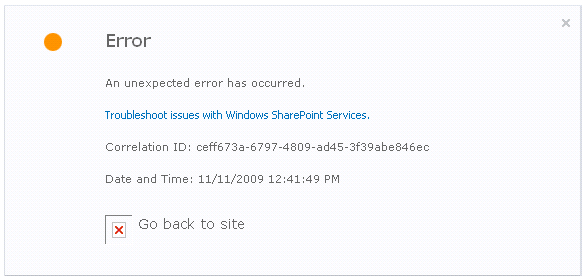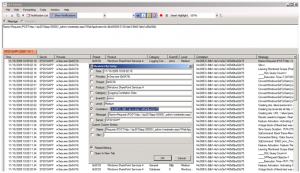SharePoint 2010 ULS logging adds a very useful new column called the Correlation ID. The ID tracks a request and greatly simplifies finding detailed error logging in SharePoint trace logs. Additionally, Mattias Karlson points out that there’s a new CodePlex project called ULSViewer which parses SharePoint 2010 logs in a friendly view.
The correlation ID in a SharePoint 2010 error message:
The Trace logs in ULS Viewer, filtered by the Correlation ID:


You must be logged in to post a comment.